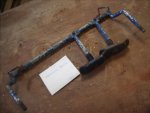2pac,
I think there should be a decimal point between the 4 and 5. ie 4.5nm. Anyone?
I think you knew this?:wink2:
I think there should be a decimal point between the 4 and 5. ie 4.5nm. Anyone?
I think you knew this?:wink2:


